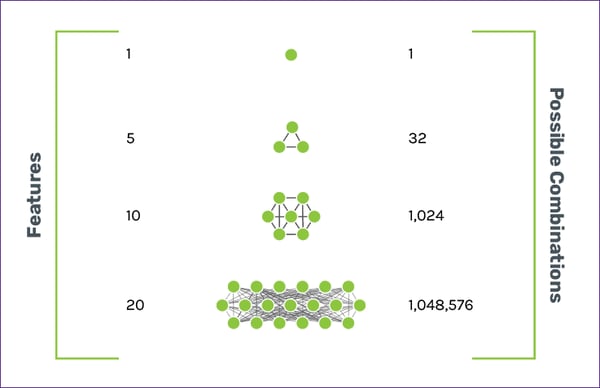
One of the biggest challenges product planners and manufacturers face is hitting the production schedule. You have to be careful that you don’t rush product launch and end up with a misaligned product, or miss fulfilling customer needs or market opportunities. The goal is to optimize around production and equipment efficiencies. And although changes are inevitable during production, having the tools to quickly react and resolve them is critical.
The key to nailing your product launch is reducing workflow inefficiencies while simultaneously minimizing product vulnerabilities. Reducing data rigidity plays a part in both of these.
Workflow Inefficiencies
The complexity and cost involved with bringing a product to market can be incredibly overwhelming, making it very challenging to meet deadlines. There are many people and processes involved, especially review cycles. When changes occur during the process, it can impact production stages, potentially costing millions of dollars and lost market opportunities.
For example, if there is a delay in meeting production time slots, you may have to pay a contract factory to wait for your updated specs. A study shows that 81% of manufacturers find that downtime like this costs over $300,000 per hour, with 33% of organizations citing downtime of up to $1M an hour.
Having an effective change management process or tool plays a part in workflow inefficiencies. Consulting firm McKinsey & Company found that a major automobile company was able to reduce launch costs by 40% and increase projected sales volumes by 80% when they committed to a plan to improve their change management process in the face of a delayed product launch.
The types of workflow inefficiencies that plague product planners and lead to missed deadlines are:
- Delayed and drawn-out review and approval processes caused by serial stage-and-gate checkpoints
- Manual, repetitive data entry of huge amounts of complex data
- Lack of real-time collaboration tools
- Language translation hold-ups with multiple global teams
- Design documentation version control issues
- Lag/delay in sharing data through mostly offline processes
- Analyzing the data to help you innovate product offering
LEARN MORE: Download Reducing Complexity and Financial Waste in Product Manufacturing E-Book!
At the tactical level, product planners have to take all the production inputs, factor them, and then plan for approvals and obtain the consent to move forward with manufacturing and production, which carries with it a financial burden to the company.
Factors include:
- Customer needs & requirements
- Market research
- Competitive intelligence
- Cost factors
- Production timing
- Capabilities
- Strategy
Consider tools that improve upon your ability to evaluate the inputs in real-time and help you communicate smoothly with global teams across the various production stages.
Product Vulnerabilities
Product planners must contend with many changes and issues that pop up during all the production stages - stages that can be quite lengthy.
For example, if you are manufacturing a new car, it can take up to five years of planning before it is finally delivered to market. And during that entire time, elements are constantly evolving. Things like change-history are extremely valuable to help inform decisions down the line, but often change-history data is too convoluted to see clearly.
Ultimately, products are vulnerable to being changed and affected by defects on the production line, updated feature changes, unforeseen costs, new market entrants and more. These vulnerabilities lead to missed market opportunities (being late to market) and costly changes.
Some of the issues surrounding product vulnerability include:
- Product definition not being completed and approved.
- Forbes cites that using technology and data analytics is crucial in enabling manufactures to innovate better and stay competitive.
- A limited linear product development lifecycle, which leads to expensive manufacturing delays when changes need to be made.
- Challenges in analyzing many product offerings, including their hundreds or thousands of variants.
- Product planners require more "what-if" scenario planning to identify the best features to include or not include.
- Product approvals are then sometimes made without the full picture of configuration data.
- Manufacturers struggling to adopt new technology and become more agile.

Download the Guide: Reducing Complexity and Financial Waste in Product Manufacturing
Data Rigidity
Data Abundant, Insight Poor
The limitations of traditional work tools like Word, Excel, and PowerPoint are some of the culprits in limiting product planners' ability to work with all the possible inputs. Variables like market research, customer needs, cost factors, etc. can multiply quickly. It is difficult to accurately analyze data that is siloed in different areas. It is equally difficult to consider data that is so numerous it is impossible to evaluate it in a meaningful way.
For example, when planning products with multiple features or variants, things can quickly spiral up to seemingly endless options. When you only have a handful of features, there are a manageable amount of possible configurations to evaluate (see table.)

But the possible combinations exponentially increase as more and more features are added. A practical, real-world example of this can be seen when an automotive OEM saved $12M annually just by reducing the amount of key fob variations they offered across their vehicle lines. Production cost was saved by limiting the variations.
Product planners need the ability to control configuration complexity effectively. We cover more of this in our post Manage Product Complexity & Increase Speed to Market.
Evaluating the Data
Data rigidity limits how product planners analyze information and hinders them from correlating data in different scenarios to see missed market opportunities or catch problems in engineering or before hitting the production line. This situation is improved when you have the ability to 1) analyze the data to have better insights on product market fit, 2) use automation in terms of disseminating updates and changes for people to review and approve, and 3) visualize product in new ways so you can come up with a better product definition that meets the needs of the market.
Typical issues that keep production data rigid include:
- Many of the same workflow inefficiency struggles noted earlier, with manual data entry, version control complications, redundant data share, wasteful approval processes impeding product planning.
- Single point of data management causing inefficient and lengthy processes.
- Using Office suite products like spreadsheets, which cannot set secure data access and control, which leads to security and data sensitivity concerns.
The production line is very sensitive. Unless you do the upfront work of planning and designing your product well, from getting the specs and requirements really nailed down to deciding what is actually to be brought to market, extremely time consuming and costly repercussions will occur.
How We Can Help
Gocious helps hard goods manufacturers make better decisions about their complex products. We accomplish this through a product portfolio analytics platform, offering an industry-first cloud-based solution engineered specifically for multi-variant products. We provide secure, real-time product portfolio analytics to propel companies to more informed outcomes faster, avoiding costly changes, and ultimately delivering products that meet customer and market needs.
To learn more about us, please visit our website.
For an indepth look into how product planners and manufacturers can visualize and reduce product configuration complexities to improve efficiency, meet timelines, and reduce cost, please download our e-Book below.
Additional Resources
5 Tips To Better Align New Products To Customers
5 Things Learned About Rapid Product Development From COVID-19
Manage Product Complexity and Increase Speed to Market



